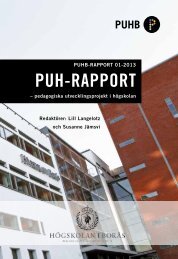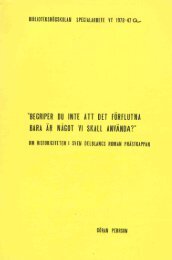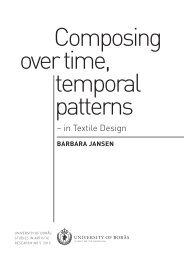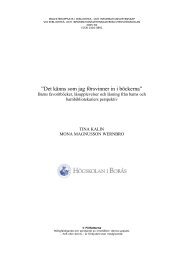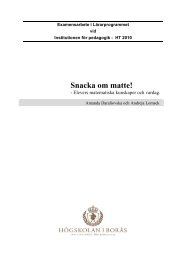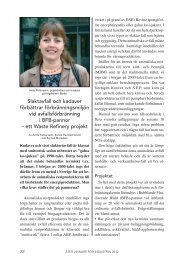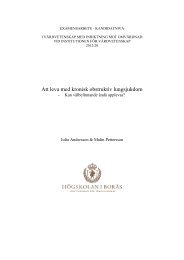Bildning för alla! - DiVA
Bildning för alla! - DiVA
Bildning för alla! - DiVA
You also want an ePaper? Increase the reach of your titles
YUMPU automatically turns print PDFs into web optimized ePapers that Google loves.
any child from being part of this experience but at what cost to others when the problems<br />
are such that the learning environment is destroyed and everyone pays a price?<br />
(Primary teacher, General Teaching Council Scotland, 2004, p. 13)<br />
Questions and concerns about inclusion from teachers have stemmed from<br />
their confusion about what it is supposed to do and for whom; frustration about<br />
being unable to undertake it because of pressures from competing policy demands,<br />
especially from drives to raise achievement; guilt about letting down children and<br />
parents; and exhaustion, feeling that things cannot continue as they are (Allan,<br />
2008). Teachers have reacted to inclusion by complaining about their lack of knowledge<br />
and experience and by asking for training (Meijer, 2003; Pijl & Frissen, 2009).<br />
Difficulties with the “transformation from ideal into practice” (Haug, undated) are<br />
reported as widespread across Europe and indeed beyond (Mitchell, 2005; Rix et<br />
al., 2005; Persson, 2006).<br />
Baroness Warnock, recognised as the “architect” of inclusion in the UK, has<br />
weighed in with, not so much questions about inclusion, but a damming pronouncement<br />
on inclusion as “disastrous” (Warnock, 2005, p. 22). In a pamphlet<br />
published by the Philosophy of Education Society of Great Britain, she declared<br />
it to have been a mistake to have thought that all children could succeed in<br />
mainstream schools and lamented that “children are the casualities” (ibid., p. 14)<br />
of this mistake. Her call for a return to segregated schooling, at least for some<br />
people, was denounced roundly by inclusion commentators such as Barton (2005)<br />
and Norwich (2006), who expressed disappointment and puzzlement at her lack<br />
of familiarity with the field of inclusion and its current debates, but was seen as<br />
a vindication by others (Spurgeon, 2006; Wing, 2006) and as an indication that<br />
“the tide is turning on SEN provision” (Gloucestershire Special Schools Protection<br />
League, 2005). The General Teaching Council in Scotland, which invited Warnock<br />
to address its members on the subject of her pamphlet, apologised for accidentally<br />
misprinting the title of her lecture, so that it appeared not, as intended, as From<br />
integration to inclusion, but From integration to exclusion. However, this new inflection<br />
was closer to her intended argument which seemed, from the reactions by<br />
teachers and local authority personnel, to be aligned with their concerns.<br />
Parents have become increasingly concerned about the unwillingness of schools<br />
to accept their child (Audit Commission, 2002; Ofsted, 2004) and have experienced<br />
considerable pain and anguish during the “long road to statementing” and<br />
in the “struggle to get a child with special needs everything it needed to be fully<br />
included” (Macbeath et al., 2006, pp. 59-60). Their experiences in the role as “consumer”<br />
and “partner” (Vincent, 2000, p. 2) appear to be negative and exclusionary.<br />
For those parents whose children have made it into mainstream, there have been<br />
concerns about the schools’ reluctance to embrace full inclusion (www.Disability-<br />
Resources.org; National Council on Disability, 1994) and worries that the teachers<br />
are ill prepared to give their children the support they need (Eason, 2004; Macbeth<br />
et al., 2006).<br />
The many children and young people whom I have encountered, whilst undertaking<br />
research, find inclusion such a simple concept and such an obvious right<br />
that they are mystified as to why adults experience it as such a struggle. In one<br />
study of children’s rights (Allan et al., 2006), a group of children were invited to<br />
AllAn • 111



